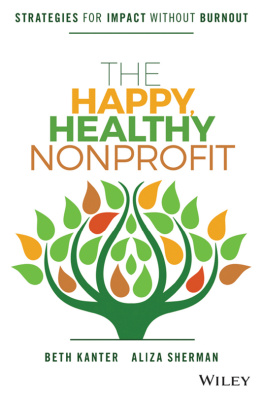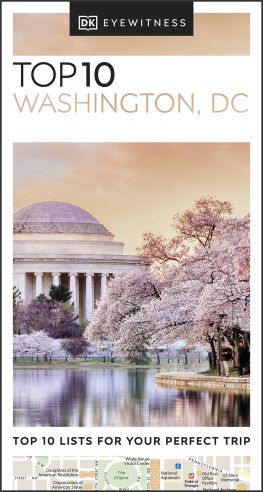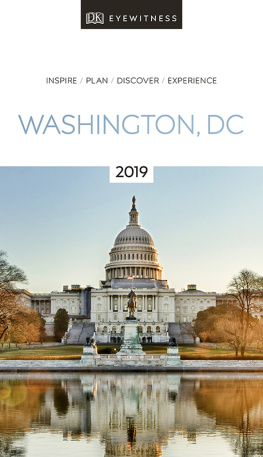ACKNOWLEDGMENTS
No Access Washington, DC, is a book because a wonderful group of people helped us to take it from idea to the page. These people not only trusted us enough to allow us to visit places precious to them, to the city, and to history, but welcomed us warmly. In many cases that meant allowing us into sites not typically open to the general public sites, which we understand can be a big ask. So many people along the way were generous with their time and their stories, and for that we are so appreciative. Thank you to the following individuals for allowing us into your worlds, for supporting this project, suggesting places, brainstorming, making introductions, issuing permits, visiting sites with us, answering questions, sharing information, showing us around, and so much more:
Alex Dodds, Alli Weiss, Anthony Hesselius, Ari Geller, Audrey Fix Schaefer, Audrey Tepper, Austin Graff, Betsy Gressler, Brian Joyner, Carol McDonald, Chana Engle, Craig Fifer, Debra Perlin, Denise at Road Runner Photography, Elizabeth Buchanan, Elizabeth Baudhuin, Emily Levine, Gay Vietzke, Grace Tumminelli, Gretchen Ellsworth, Hanaa Rifaey, Helen von Gohren, Jackie Leventhal, Jim McKinney, John Shore, Juan Moreno, Karen Weschler, Kate Childs Graham, Kerry Wilson, Kristen Gentile, Shannon Powers, Lindley Thornburg Richardson, Lisa Grant, Marvin Mostow, Matt Weiss, Meagan Baco, Mel Gold, Michelle Weiner, Miriam Kleiman, Mioko Miller, Mistue Morita, Nicholas Partridge, Rachel Zukrow, Rebecca Goodstein, Robbin Owen, Sara Adland, Sara Jaffe, Sarah Rosenfeld, Sean Kennealy, Sioux Thompson, Spencer Abruzzese, Susan McCullough, Tara Morrison, Tom Jacobus, Tonya Thomas, Tina OConnell, and Tom Fazzini.
A tremendous thank-you to Eric Parnes for allowing us to include his striking images of the former Iranian embassy on pages 3839 and for sharing his experience.
A special thank-you to Steve Coleman of Washington Parks & People for your generosity of time, spirit, and hope, and for sharing your parks and lore with us.
Amy Lyons, I cannot thank you enough for entrusting me with this project. I feel lucky to have the opportunity to work with you once more and to have the chance to write about Washington, DC, again. Thank you to Hope Clarke and the editorial and publicity and marketing teams at Globe Pequot Press for your care and attention.
Emily, its been another wonderful adventure. Thank you for your eye and your imagesand for being good company along the way.
I am incredibly lucky in my life to have a group of people who support and lift me up in life and through the process of No Access Washington, DC. For your support and friendship as well as your check-ins, pep talks, skillful edits, field trip companionship, introductions, and understanding of this deadline, thank you: Alyson Weinberg, Courtney Farber, Debbie Feit, Sharon Samber, Lisa Kanter, Jonathan Kanter, Jessica Nemeth, Ilana Preuss, Louise Milkman, and Mark Katkov.
I cannot let the chance go by without acknowledging that the spirit and life of Elissa Froman dances throughout these pages. She showed up at just about every site visit in this book, and for that I am grateful.
To my extraordinary DC-born and -bred children, Miriam and Gabriel, who help me smile on and off deadline. I like and love you both more than there are words to say.
Jeff, who knew all those years ago that DC would be the place? That it would be home? Thanks for being you.
BKK
Turns out, getting access to the hidden and off-limits spots in and around DC requires lots of special permission. And by special permission, I mean folks who know us, vouching that wed be good stewards of sacred, historic, precious places and convincing many layers of gatekeepers that we could be trusted with access that very few others get.
As such, this book is the product of a huge community of wildly helpful people:
Alex Dodds, Alli Weiss, Anthony Hesselius, Ari Geller, Betsy Gressler, Carol McDonald, Chana Engle, Courtney Farber, Craig Fifer, Debra Perlin, Devin Dotson, Elizabeth Buchanan, Emily Levine, Hanaa Rifaey, Jackie Leventhal, John Shore, Kate Childs Graham, Kristen Gentile, Lisa Dubler, Marvin Mostow, Michelle Weiner, Rachel Zukrow, Ryan Thomas, Sara Adland, Sara Jaffe, Sioux Thompson, Spencer Abruzzese, Susan McCullough, and Tom Fazzini.
Thank you for connecting us and trusting us.
To Beth Kanter, your ability to dream, ask, visualize, then create is stunning. Thanks for inviting me along on this adventure! And to Amy Lyons at Rowman & Littlefield, thank you for once again believing I was the right gal to photograph this project.
Knowing that Steve Coleman at Washington Parks & People is doing such awe-inspiring work on a daily basis gives me hope for our city and our world.
Amy Born, Cara Fisher, Amber Wobschall, Ori Korin, Jodi Holzband, and Molly Amsteryou are my rocks. Thank you for checking in, brainstorming, and liking so many of my posts on social media.
To my parents, Lois and Peter Goodstein, thank you for choosing DC and teaching me to love it, too.
To my sister Rebecca Goodstein, I wish I could have brought you with me on every single location we visited for this book! Your love of our city and powerful work to be a good steward of the environment makes me so proud to be your sister.
To my sister Sarah Rosenfeld, I cried in the lobby of the NIH Clinical Center during our photo session as I told the staff your heroic story. Your bravery is inspiring.
And lastly, to my very patient partner, Ron Kelly: Thank you for listening and encouraging me. And teaching me to appreciate a well-designed parking lot. Life would be far less exciting, less delicious, and significantly less interesting without you in it.
EPG
AVALON THEATRE
For the price of a ticket, the Avalon Theatre transports moviegoers everywhere in the worldand occasionally beyondfive shows a day, seven days a week. But what most who belly up to the box office dont know is that there is an unscripted journey to be had behind the silver screen at the 1923 Chevy Chase movie house.
For the lucky few who get to see it, the area concealed by the screen serves as a faded, largely untouched snapshot of the historic theaters early days. It reveals chipped, dusty clues about a time when the names of live acts graced the marquee, an organ played during silent films, and some 1,200 people (versus the 450 seats there now) squeezed together to take it all in. Decrepit dressing rooms where actors once made quick costume changes still stand in the wings, and peeling gold paint adorns what appears to be a once-gilded arch above the stage now partly concealed by wooden pallets, plywood, and the stray piece of aging movie equipment. Beneath the stage, a large pit, once an important part of a cooling system, remains.
They got AC in the thirties," explains former board chair Kim Abraham. Before that they had a system where they would dump ice and circulate the air one way or another around it. It was a comfortable place to come and get out of the heat. People would settle in here for the day.
Abraham joined with others in the community to save the Avalon when it was abruptly closed in 2001. As a result of their efforts, the theater reopened in 2003 as an independent, nonprofit entity. Money raised during the process allowed the Avalon to be repaired and reimagined as a film and education center.








